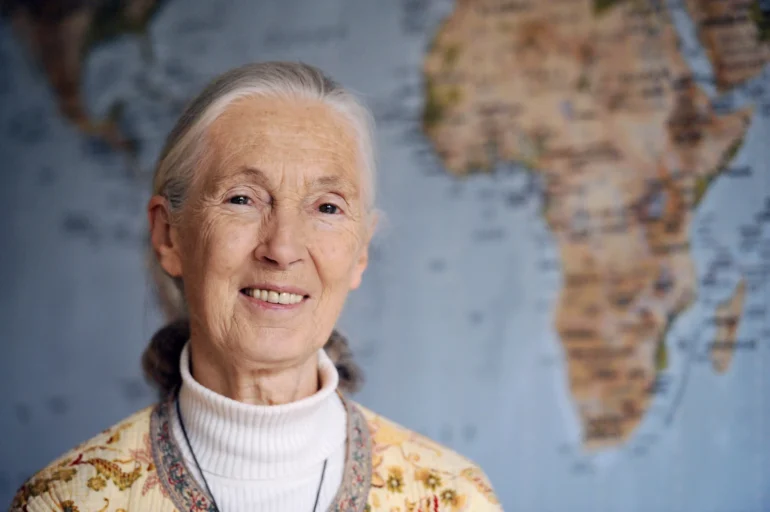Jane Goodall, the renowned British primatologist and conservationist whose groundbreaking research on chimpanzees reshaped our understanding of the connections between humans and animals, passed away at the age of 91, the Jane Goodall Institute announced on October 1, 2025. Her decades-long work in the forests of Tanzania revealed the complex behaviors of chimpanzees, showing the world their striking similarities to humans and challenging long-held scientific beliefs.
Born on April 3, 1934, in London, Goodall grew up in a seaside town in England, raised by her mother in a household filled with women after her parents’ divorce. Her childhood fascination with animals was sparked by books like Tarzan and Doctor Dolittle, fueling her dream to live among and write about animals. Unable to afford college, she attended secretarial school and worked as a waitress to save for a trip to Kenya in 1956, where a chance meeting with paleontologist Louis Leakey changed her life.
Leakey, impressed by Goodall’s passion and knowledge of animals despite her lack of formal education, hired her as his secretary. Recognizing her potential, he sent her to study chimpanzees in what is now Gombe Stream National Park in Tanzania in 1960. At just 26 years old and with no scientific training, Goodall faced skepticism, but Leakey saw her inexperience as an advantage, believing it gave her a fresh perspective. Accompanied by her mother as a chaperone due to local officials’ concerns about a young woman living alone in the forest, Goodall persevered through challenges like malaria and initially skittish chimps.
Her persistence paid off. Within months, Goodall made a discovery that stunned the scientific world: she observed a chimpanzee named David Greybeard using a twig as a tool to fish termites from a mound. At the time, tool-making was thought to be a uniquely human trait. This finding, published in Nature in 1964, prompted Leakey to declare, “Now we must redefine ‘tool,’ redefine ‘man,’ or accept chimpanzees as humans.” Goodall’s work revealed that chimps were not unthinking creatures but individuals with emotions, personalities, and complex social behaviors. They kissed, embraced, showed compassion, and even engaged in violent acts resembling warfare, mirroring human behaviors in ways that both fascinated and unsettled scientists.
Goodall’s unconventional approach—naming her research subjects instead of using numbers and describing their emotions—drew criticism from the male-dominated scientific community of the 1960s, which viewed animals as mechanical beings. Yet her empathy and honesty transformed primatology. “She has made the most important contributions of any primatologist in history,” said Robert Sapolsky, a Stanford professor who studies baboons using Goodall’s long-term field observation model.
Her fame grew through National Geographic coverage, documentaries, and books that captured her close bond with the chimps. Barefoot and fearless, she lived among them, feeding them bananas (a practice she later stopped after realizing it increased aggression) and documenting their social lives. Her work at Gombe, which spanned nearly three decades, established a research program that continues today.
In 1986, Goodall’s focus shifted to advocacy after learning about the threats to chimpanzees from poaching, habitat destruction, and medical experiments. She founded the Jane Goodall Institute in 1977 to protect chimpanzees and their environments, traveling tirelessly to raise awareness. Her global influence inspired generations, particularly women, to pursue careers in science. Elizabeth Lonsdorf, a professor who has conducted research at Gombe, noted that Goodall’s courage as a young woman in the wilds of Africa inspired countless female scientists.
Goodall’s personal life included two marriages—first to wildlife photographer Hugo van Lawick, with whom she had a son, and later to a politician. Despite her global travels, she always returned to her childhood home in England. When asked whether she preferred chimps or people, she replied, “Chimps are so like us that I like some people much more than some chimps and some chimps much more than some people.”
Goodall’s legacy endures through her transformative discoveries and tireless advocacy for conservation. Her work not only redefined our understanding of chimpanzees but also challenged humanity to reflect on what makes us unique—and what responsibilities we bear toward the natural world.
